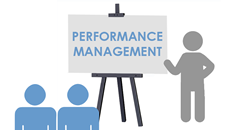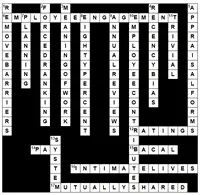Case Studies: individual Vs. System In Determining Employee Performance
In Part 1 of this article, we explained that performance is not simply a case of employee abilities or other employee characteristics, but is heavily influenced by "system variables".
In this second part we offer a case study to help you understand that performance is a bit more complex than you'd think.
The Acme Repair Shop is owned and operated by a skinflint who doesn’t believe in any of the newfangled diagnostic tools. I guess you’d call the owner someone from the old school. Luckily, the mechanics working for Acme are really topnotch. They are experienced and have good logical and diagnostic skills and excellent mechanical skills.
The Golden Auto Repair Company works a bit differently. The owner has invested in the newest technology to help his mechanics do the job. As new tools become available, he decides whether to purchase them and, if so, he makes sure his mechanics receive proper training for using them. The mechanics at Golden Auto Repair are competent, but probably not excellent by any standards. The best way to describe them would be “average.”
We need to ask the question, “How do the mechanics in these two companies perform or contribute to their respective company’s goals?”
The mechanics at Golden, although generally not possessing any above-average skills and abilities (individual variables), actually contribute much more than the excellent mechanics at Acme. A system variable—tools and training— allows average mechanics to outperform more highly skilled counterparts. The effects of system variables are very powerful.
If Jackie focuses only on employee variables (skills, abilities, knowledge, and behavior), the only conclusion is that her staff members not doing their jobs. That conclusion is clearly wrong—and any actions she takes predicated on that faulty conclusion are going to be harmful if not disastrous.
Let’s look at another, less obvious example. Jackie is head of the creative section of an ad agency that produces radio commercials. Her staff consists of five exceedingly creative people who create the ad concepts, write the scripts, and hire the “talking heads” to do the commercials. Before being promoted to section head, Jackie was one of the best creative talents around. Being used to controlling her own campaigns and excelling at the process, Jackie as manager wants to be involved in every project her employees undertake. She insists on approving every detail of each project and severely limits the decision-making authority of her employees. You’re probably familiar with the term micromanagement, which means an attempt to manage every little detail. That’s Jackie.
So, how well do her employees perform? Not so well. Since Jackie has to approve every small step, there are delays in the development of every single campaign. Jackie might believe that the resulting cost overruns and dissatisfied customers are a result of poor employee performance, but it’s not. They’re a result of a system variable, Jackie’s own behavior.
Imagine what happens
when Jackie does her
annual performance
reviews with her staff.
From where she sits, her
employees are under-performing,
since what she
sees are the cost overruns
on the projects. If she
focuses only on employee
variables (skills, abilities,
knowledge, and behavior),
the only conclusion is that her staff members not doing their
jobs. That conclusion is clearly wrong—and any actions she
takes predicated on that faulty conclusion are going to be
harmful if not disastrous.




